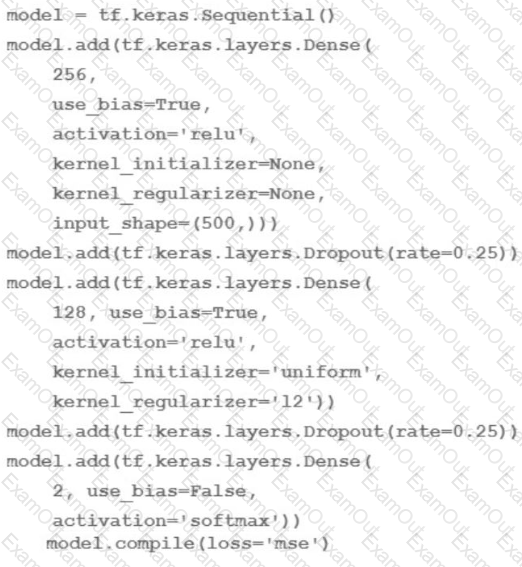You are an ML engineer in the contact center of a large enterprise. You need to build a sentiment analysis tool that predicts customer sentiment from recorded phone conversations. You need to identify the best approach to building a model while ensuring that the gender, age, and cultural differences of the customers who called the contact center do not impact any stage of the model development pipeline and results. What should you do?
You have trained an XGBoost model that you plan to deploy on Vertex Al for online prediction. You are now uploading your model to Vertex Al Model Registry, and you need to configure the explanation method that will serve online prediction requests to be returned with minimal latency. You also want to be alerted when feature attributions of the model meaningfully change over time. What should you do?
You work for a pharmaceutical company based in Canada. Your team developed a BigQuery ML model to predict the number of flu infections for the next month in Canada Weather data is published weekly and flu infection statistics are published monthly. You need to configure a model retraining policy that minimizes cost What should you do?
You have trained a model by using data that was preprocessed in a batch Dataflow pipeline Your use case requires real-time inference. You want to ensure that the data preprocessing logic is applied consistently between training and serving. What should you do?
You recently deployed a model to a Vertex Al endpoint Your data drifts frequently so you have enabled request-response logging and created a Vertex Al Model Monitoring job. You have observed that your model is receiving higher traffic than expected. You need to reduce the model monitoring cost while continuing to quickly detect drift. What should you do?
You need to use TensorFlow to train an image classification model. Your dataset is located in a Cloud Storage directory and contains millions of labeled images Before training the model, you need to prepare the data. You want the data preprocessing and model training workflow to be as efficient scalable, and low maintenance as possible. What should you do?
You are building a real-time prediction engine that streams files which may contain Personally Identifiable Information (Pll) to Google Cloud. You want to use the Cloud Data Loss Prevention (DLP) API to scan the files. How should you ensure that the Pll is not accessible by unauthorized individuals?
You are going to train a DNN regression model with Keras APIs using this code:

How many trainable weights does your model have? (The arithmetic below is correct.)
You received a training-serving skew alert from a Vertex Al Model Monitoring job running in production. You retrained the model with more recent training data, and deployed it back to the Vertex Al endpoint but you are still receiving the same alert. What should you do?
You have been asked to develop an input pipeline for an ML training model that processes images from disparate sources at a low latency. You discover that your input data does not fit in memory. How should you create a dataset following Google-recommended best practices?

